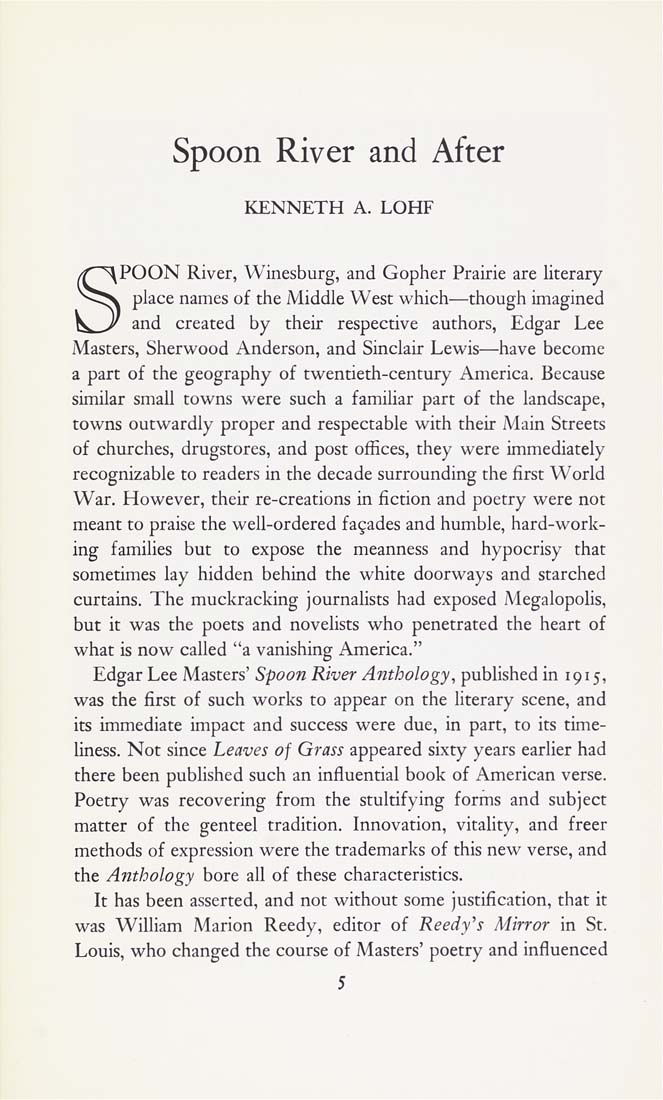Columbia Library columns (v.14(1964Nov-1965May))
(New York : Friends of the Columbia Libraries. )
|
||
|
|
|
|
| v.14,no.2(1965:Feb): Page 5 |

Spoon River and After KENNETH A. LOHF ^POON River, Winesburg, and Gopher Prairie are literary place names of the Middle West which—though imagined and created by their respective authors, Edgar Lee Masters, Sherwood Anderson, and Sinclair Lewis—have become a part of the geography of twentieth-century America. Because similar small towns were such a familiar part of the landscape, towns outwardly proper and respectable with their Main Streets of churches, drugstores, and post offices, they were immediately recognizable to readers in the decade surrounding the first World War. However, their re-creations in fiction and poetry were not meant to praise the well-ordered fagades and humble, hard-work¬ ing families but to expose the meanness and hypocrisy that sometimes lay hidden behind the white doorways and starched curtains. The muckracking journalists had exposed Megalopolis, but it was the poets and novelists who penetrated the heart of what is now called "a vanishing America." Edgar Lee Masters' Spoon River Anthology, published in 1915, was the first of such works to appear on the literary scene, and its immediate impact and success were due, in part, to its time¬ liness. Not since Leaves of Grass appeared sixty years earlier had there been published such an influential book of American verse. Poetry was recovering from the stultifying forms and subject matter of the genteel tradition. Innovation, vitality, and freer methods of expression were the trademarks of this new verse, and the Anthology bore all of these characteristics. It has been asserted, and not without some justification, that it was William Marion Reedy, editor of Reedy's Mirror in St. Louis, who changed the course of Masters' poetry and influenced 5 |
| v.14,no.2(1965:Feb): Page 5 |







